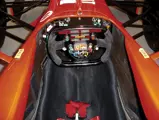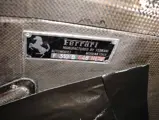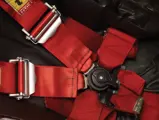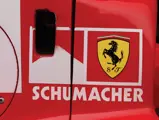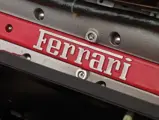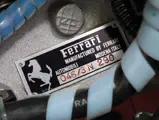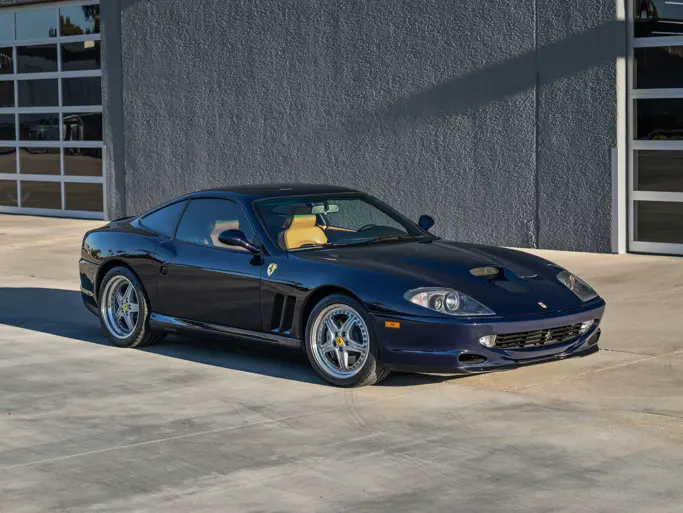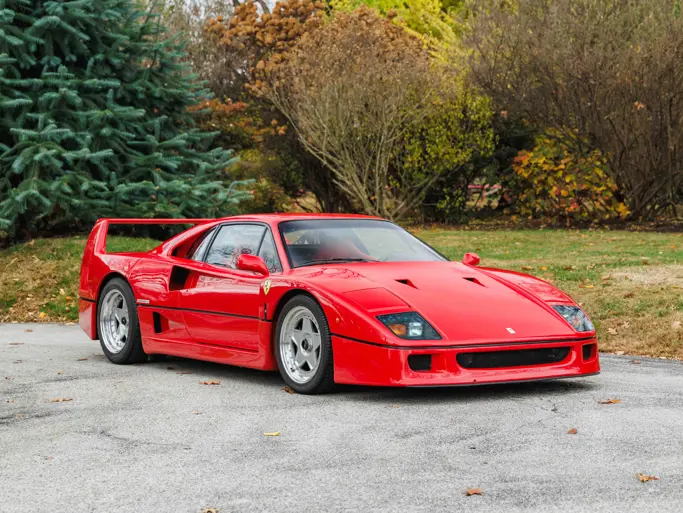730 bhp, 2,998 cc 40-valve, rear-mounted, longitudinal, 75-degree V-10 Ferrari Type 046, 046/2 engine, Ferrari seven-speed, transverse, semi-automatic gearbox, double-wishbone, pushrod-activated, torsion-spring suspension in the front and rear, and carbon-fiber ventilated disc brakes. Wheelbase: 115.6 in.
FIFTY YEARS OF FERRARI
Nineteen ninety-seven was a landmark year for the Scuderia, as it marked the company’s 50th anniversary, and it had quite a lot to celebrate. Motorsport, especially Formula One, had always been near and dear to the company’s heart. It was through its success in Formula One that Ferrari was catapulted from relative obscurity in its early days to becoming one of the most respected and recognizable automotive brands on the planet. Other manufacturers had come and gone from the sport, but Ferrari was always a constant presence at the front of the starting grid.
By 1997, Ferrari’s road car division was enjoying unbridled success, particularly with the launch of the F1-style gearbox management system in the F355 F1, which inextricably linked Ferrari’s road cars with the F1 program. Ferrari, not a company willing to dwell on its past laurels, was constantly looking to the future for inspiration and technological development in order to win its next World Championship, and the Prancing Horse wanted to arrive in the 21st century at the top of the podium.
In terms of Formula One, 1997 was perceived by many to be a building year for Ferrari. This would be Ross Brawn’s first season as the technical director and Rory Byrne’s first season as the chief designer, under the guidance of Jean Todt. Michael Schumacher, now in his second year with the Scuderia, had finished 1st on three separate occasions in 1996, and the team was eager to see both Schumacher and fellow driver Eddie Irvine on the podium more frequently in 1997.
The F310 B was still equipped with the 730-horsepower, 3.0-liter V-10 engine that Ferrari introduced with the F310 in 1996, but it was further refined and developed from lessons learned in the previous season and was subsequently given the factory designation of Type 046/2. Ferrari’s V-10 Formula One engines are known for their high-revving nature and glorious exhaust note, which is a sound that has always been enjoyed by spectators in the grandstands of race tracks all over the world, but to the person sitting behind the wheel, it is a beautiful symphony.
Despite its otherworldly performance, the F310 B is considered to be rather docile when compared to Formula One cars of past. The F310 B was included in the 1997/1998 issue of Autocourse, where John Barnard stated that he designed the car to be “easy to drive, stable, and consistent” on the race track, making it an excellent choice for a newcomer to the world of Formula One racing and quite easy to handle for those already used to such high-strung machines.
CHASSIS NUMBER 179
The F310 B offered here, chassis number 179, is the second to last example built, and it is the first of just two lighter-specification examples constructed with a slightly higher fuel capacity than the first models. The car made its first appearance at the Belgian Grand Prix at Spa, with none other than Michael Schumacher behind the wheel. However, as Schumacher was used to the heavier iteration of the car, he struggled to find a setup that he liked and thus reverted to the older-spec car, to finish 3rd in qualifying. For the race, chassis 179 was set up for dry-weather conditions. Unfortunately, the race began in a torrential downpour, so Schumacher decided to race the same car he qualified in.
The car’s next appearance was in the following round of the Championship, at the Italian Grand Prix at Monza on September 7. This time, it was Irvine that found himself behind the wheel of chassis 179, finishing 10th in qualifying and moving up two positions to finish 8th overall in the grand prix itself. Irvine retained the car for the Austrian Grand Prix two weeks later, where he qualified 8th but failed to finish. Williams emerged victorious with the constructors’ title at the end of the season, while Schumacher remained in the running for the Drivers’ Championship all the way up until the final race of the season, which is a testament to the potential of the F310 B.
Following its retirement from professional racing, chassis 179 left Ferrari’s stable in 1999, and since then, it has had a documented history in the ownership of a small group of prominent collectors. Over the years, it has been seen at several motorsport events, including at Ferrari Racing Days at the Hockenheimring in Germany in 2000 and at the Monterey Historic Races at Laguna Seca in 2004. Additionally, the car has been a frequent sight at Ferrari’s popular F1 Clienti events.
In 2003, Ferrari’s F1 Clienti Department was created in order to support owners of Ferrari F1 racers by facilitating events where clients can drive their cars at speed on some of the race tracks where they were campaigned when new. Additionally, the factory supplies their own trained technicians to help maintain and monitor the cars at the events. Customers can also opt to store and service their cars at the factory, if they so desire. Chassis 179 has attended many F1 Clienti events following its retirement from professional racing, and it would surely be welcome at future events. Furthermore, it is important to note that this car has been granted Ferrari Classiche certification, which certifies that it is as factory-correct as it was when it was campaigned by Schumacher and Irvine in 1997.
Not only is the F310 B a symbol of Ferrari’s 50-year pursuit of success in motorsport, it is also a remarkable example of automotive technology. In terms of Formula One history, it marks the beginning of a series of vehicles that brought Ferrari and Michael Schumacher multiple World Championship titles, making Schumacher the winningest Formula One driver of all time, in an era that many will fondly remember. Even though chassis 179 left the world stage 17 years ago, it still provides an endless amount of thrills to both driver and spectators. For the avid tifosi, track-day veteran, or the enthusiast looking to purchase their first Formula One car, nothing on four wheels comes close to the visceral experience of piloting such an automobile at speed.
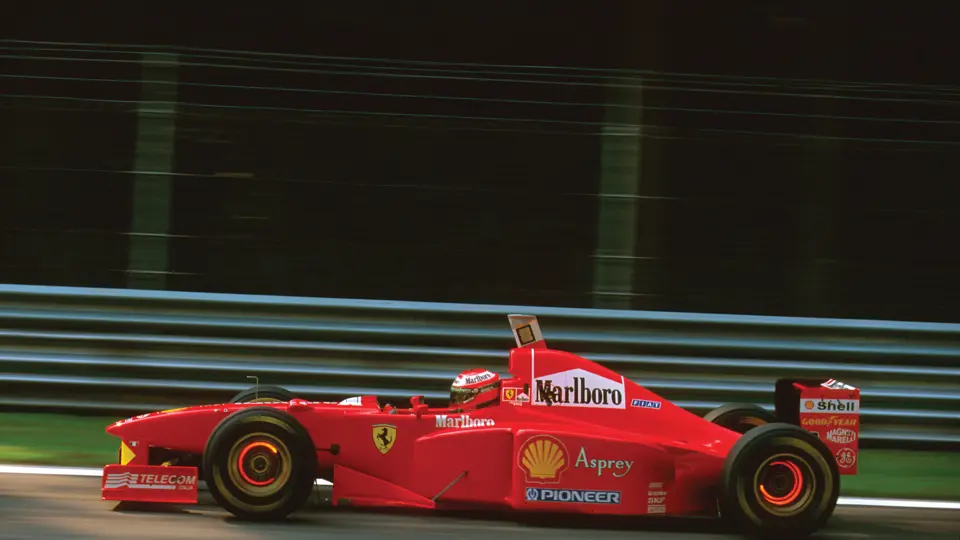




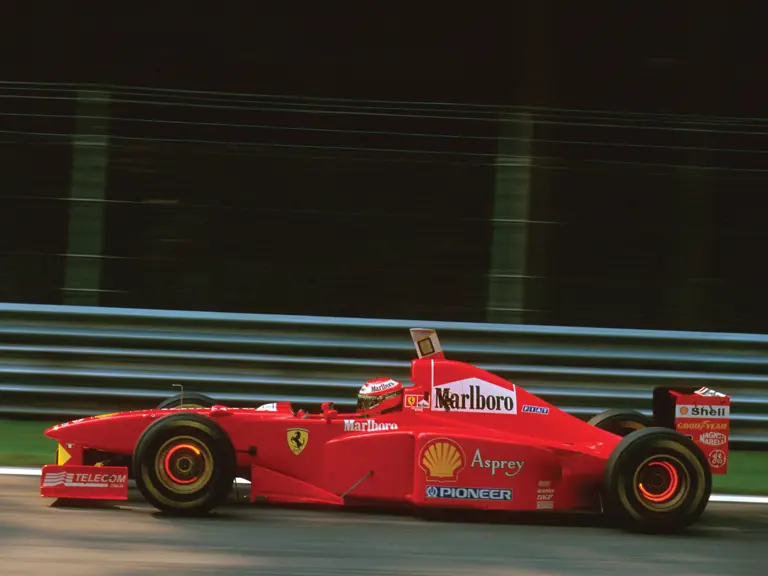
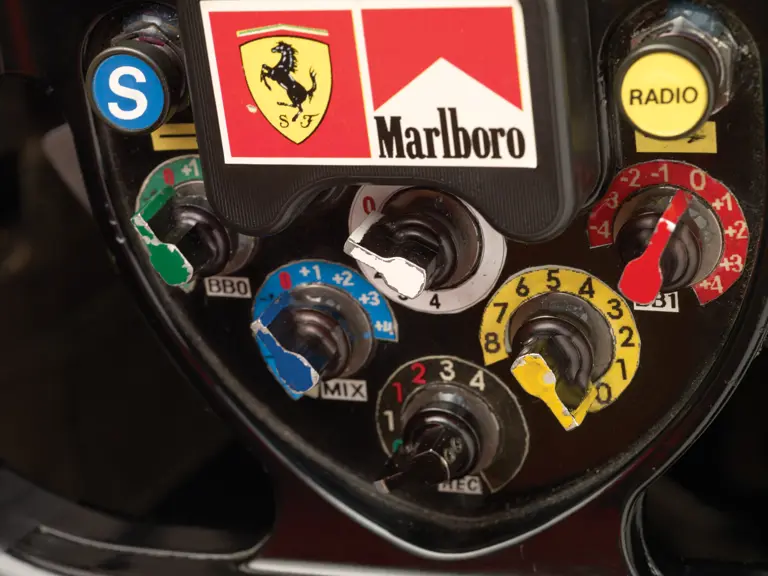
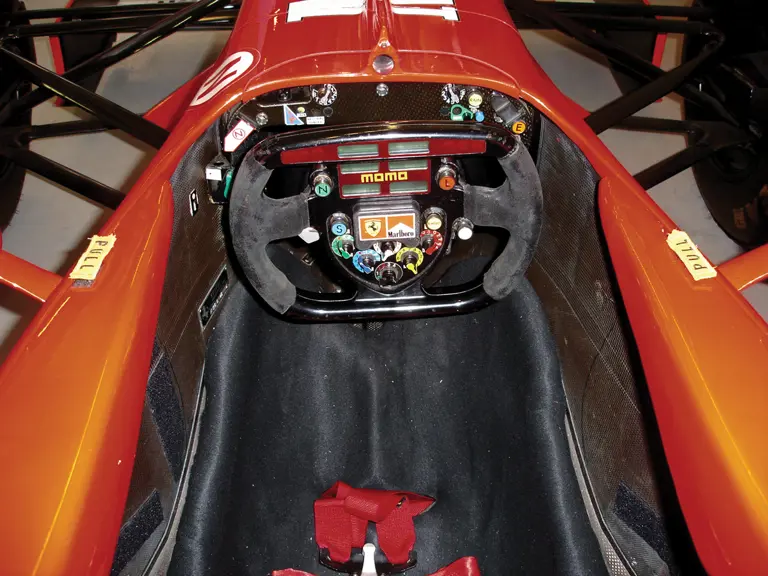
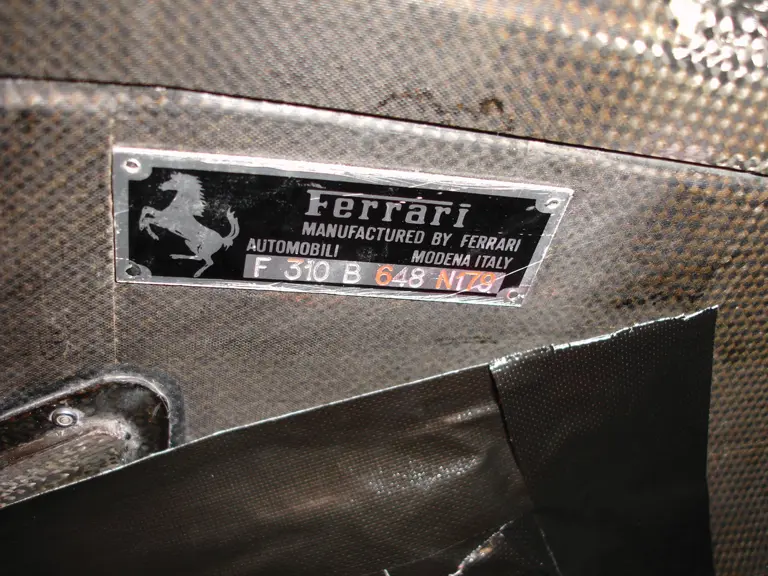

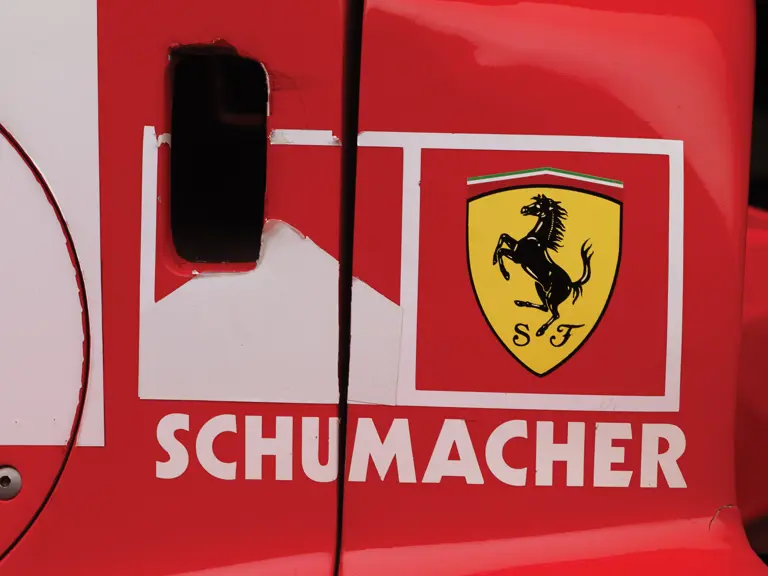
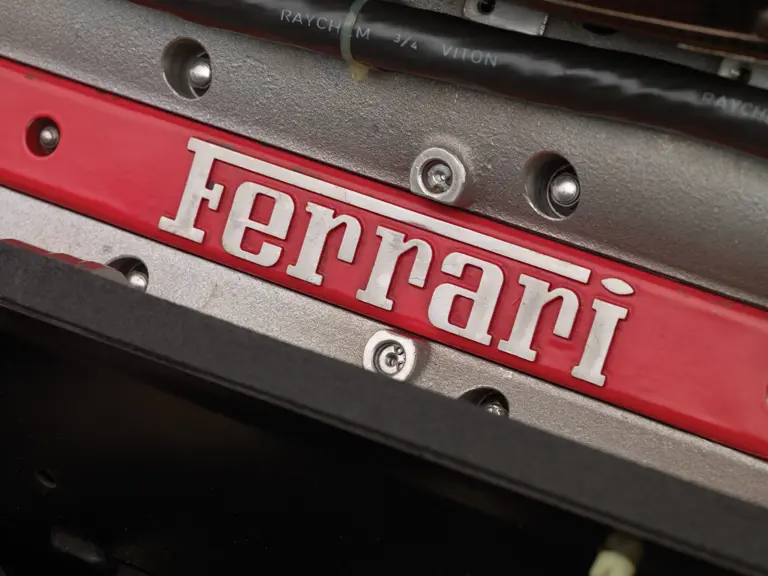

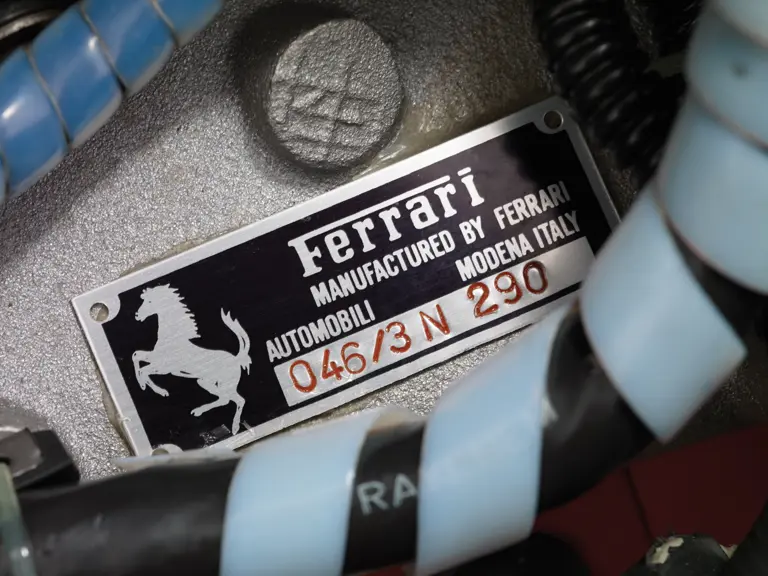
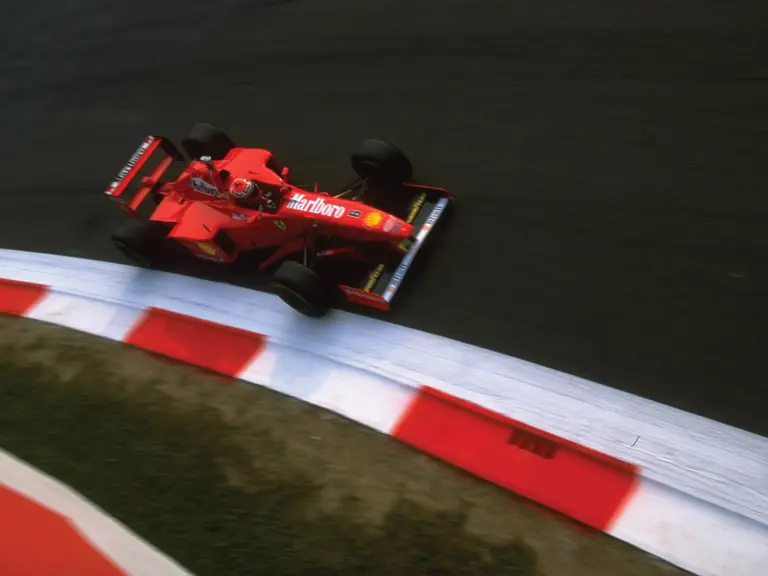

 | Monterey, California
| Monterey, California



